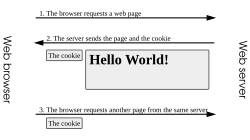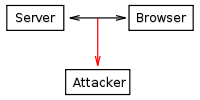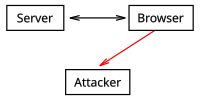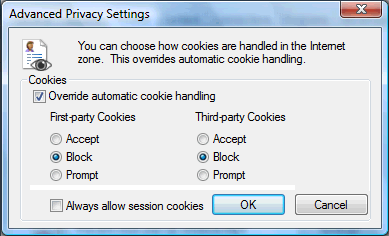alias- Create an alias
break- Exit from a for, while, until or select loop
builtin- Run a shell builtin, passing it args, and return
cal- Display a calendar
case- Conditionally perform a commandcat Display the contents of a file
cat- Display the contents of a file (concatenate)
cd- Change Directory - change the current working directory to a specific Folder.
cfdisk- Curses based disk partition table manipulator for Linux
chgrp- Change group ownership
chmod- Change access permissions
chown- Change file owner and group
chroot- Run a command with a different root directory
cksum- Print CRC checksum and byte counts
cmp- Compare two files
comm- Compare two sorted files line by line
command- Run a command - ignoring shell functions
continue- Resume the next iteration of a loop
cp- Copy one or more files to another location
cron- Daemon to execute scheduled commands
crontab- Schedule a command to run at a later time
csplit- Split a file into context-determined pieces
cut- Divide a file into several parts
date- Display or change the date & time
dc- Desk Calculator
dd- Dump Data - convert and copy a file (use for RAW storage)
declare- Declare variables and give them attributes
df- Display free disk space
diff- Display the differences between two files
diff3- Show differences among three files.
dir- Briefl list of directory contents
dircolors- Color setup for `ls', outputs a sequence of shell commands to set up the terminal for color output from `ls' (and `dir', etc.).
dirname- Convert a full pathname to just a path
dirs- Display the list of currently remembered directories.
du- Estimate file space usage, reports the amount of disk space used by the specified files and for each subdirectory.
echo- Display message on screen
egrep- Search file(s) for lines that match an extended expression
enable- Enable and disable builtin shell commands.
env- Display, set, or remove environment variables, Run a command in a modified environment.
eval- Evaluate several commands/arguments
exec- Execute a command
expand- Convert tabs to spaces
export- Set an environment variable
expr- Evaluate expressions
factor- Print prime factors
false- Do nothing, returning a non-zero (false) exit status
fdformat- Low level format a floppy disk
fdisk- Partition table manipulator for Linux
fgrep- Search input files for lines that match a given pattern
find- Search a folder hierarchy for filename(s) that meet a desired criteria
fmt- Reformat paragraph text
fold- Wrap text to fit a specified width
for- Expand words, and execute commands
fsck- Filesystem consistency check and repair.
function- Define Function Macros
getopts- Parse positional parameters
hash- Remember the full pathname of a name argument
hashcharacter- A comment or remark is indicated by starting the line with the # character
head- Output the first part of files, prints the first part (10 lines by default)
history- Command Line history
hostname- Print or set system name
id- Print real and effective user id (uid) and group id (gid)
if- Conditionally perform a command.
import- Capture some or all of an X server screen and save the image to file
install- copy files while setting their permission modes and, if possible, their owner and group
join- Join lines on a common field
kill- Stop a process from running
less- Display output one screen at a time, Search through output, Edit the command line.
let- Perform arithmetic on shell variables
ln- Make links between files
local- Create variables
locate- Find files
logname- Print current login name
logout- Exit a login shell
lpc- Line printer control program
lpr- off line print - sends a print job to the default system queue
lprm- Remove jobs from the line printer spooling queue
ls- List information about FILEs, by default the current directory.
m4- macro processor
man- Display helpful information about commands.
mbadblocks- Check and repair floppy disk problems
mkdir- Create new folder(s), if they do not already exist
mkfifo- Make FIFOs (named pipes) with the specified names.
mknod- creates a FIFO, character special file, or block special file
more- Display output one screen at a time
mount- Mount a file system
mtools- allow Unix systems to manipulate MS-DOS files
mv- Move or rename files or directories
nice- Run a command with modified scheduling priority
nl- Number lines and write files
nohup- Run a command immune to hangups, runs the given COMMAND with hangup
passwd- Modify a user password
paste- Merge lines of files
period- source or dot operator
popd- Remove the top entry from the directory stack
pr- Print files, printing and pagination filter for text files
printf- Format and print data
ps- Process status, information about processes running in memory
pushd- Save and then change the current directory. With no arguments
pwd- Print Working Directory
quota- Display disk usage and limits
quotacheck- Scan a file system for disk usage
quotactl- Set disk quotas
ram- ram disk device
rcp- Copy files between two machines
read- Read a line from standard input
readonly- Mark variables/functions as readonly
return- Cause a shell function to exit with the return value n
rm- Remove files (delete/unlink)
rmdir- Remove folder(s), if they are empty
rsync- Remote file copy (Synchronize file trees)
sdiff- Merge two files interactively
sed- Stream Editor
select- Accept keyboard input
seq- Print numeric sequences
set- Manipulate shell variables and functions
shift- Shift positional parameters
shopt- Shell Options
shutdown- Shutdown or restart linux
sleep- Delay for a specified time
sort- Sort text files
split- Split a file into fixed-size pieces
su- Substitute user identity
sum- Print a checksum for a file
symlink- Make a new name for a file
sync- Synchronize data on disk with memory
tac- Concatenate and write files in reverse
tail- Output the last part of files
tar- Tape Archiver
tee- Redirect output to multiple files
test- Evaluate a conditional expression
time- Measure Program Resource Use
times- Print out the user and system times used by the shell and its children
top- List processes running on the system
touch- Change file timestamps
tr- Translate, squeeze, and/or delete characters
traceroute- Trace Route to Host
true- Do nothing, successfully
tsort- Topological sort
tty- Print filename of terminal on stdin
type- Describe a command
ulimit- Limit user resources
umask- Users file creation mask
uname- Print system information
unexpand- Convert spaces to tabs
uniq- Uniquify files
units- Convert units from one scale to another
unset- Remove variable or function names
unshar- Unpack shell archive scripts
until- Execute commands (until error)
useradd- Create new user account
usermod- Modify user account
users- List users currently logged in
uuencode- Encode a binary file uudecode Decode a file created by uuencode
watch- Execute/display a program periodically
wc- Print byte, word, and line counts
whereis- Report all known instances of a command
which- Locate a program file in the user's path.
while- Execute commands
who- Print who is currently logged in
xargs- Execute utility, passing constructed argument list(s).
yes- prints the command line arguments, separated by spaces and followed by a newline

















 LibreOffice
LibreOffice Firefox
Firefox